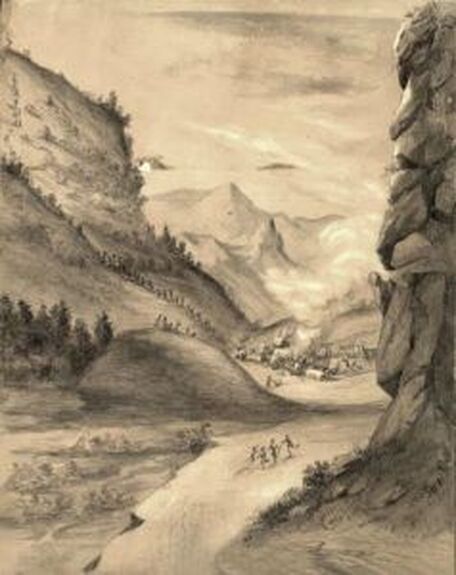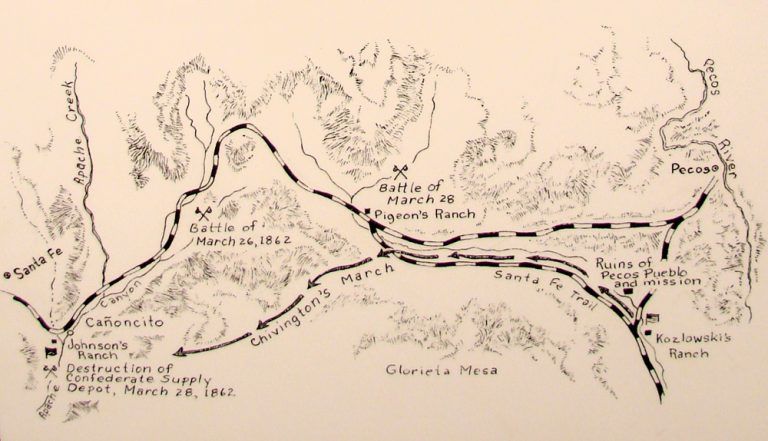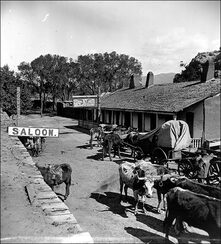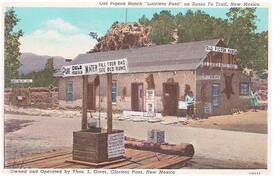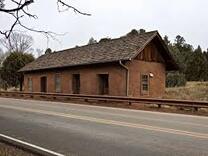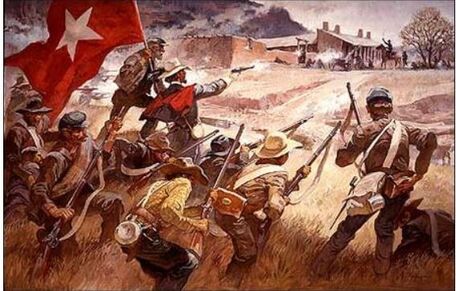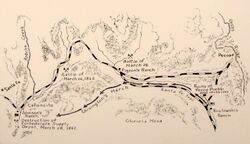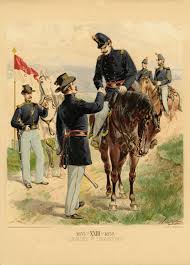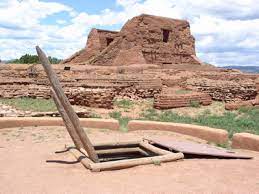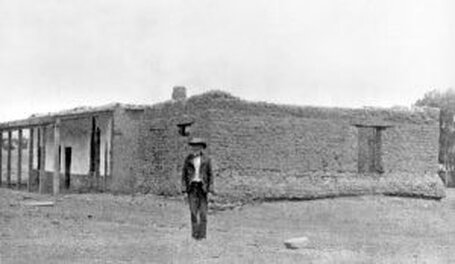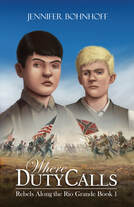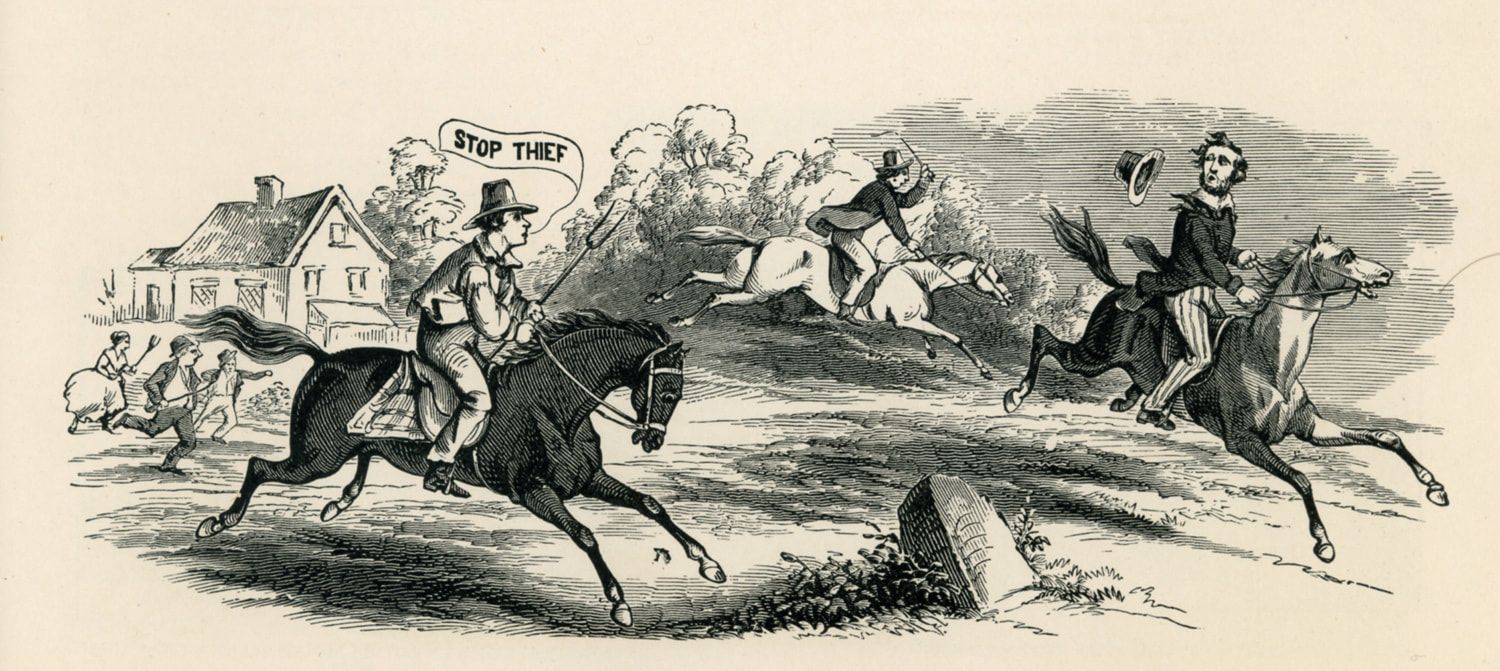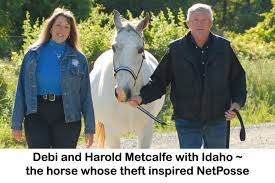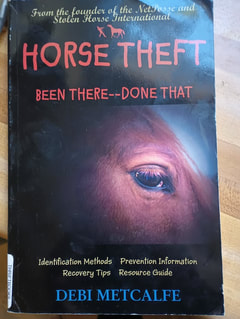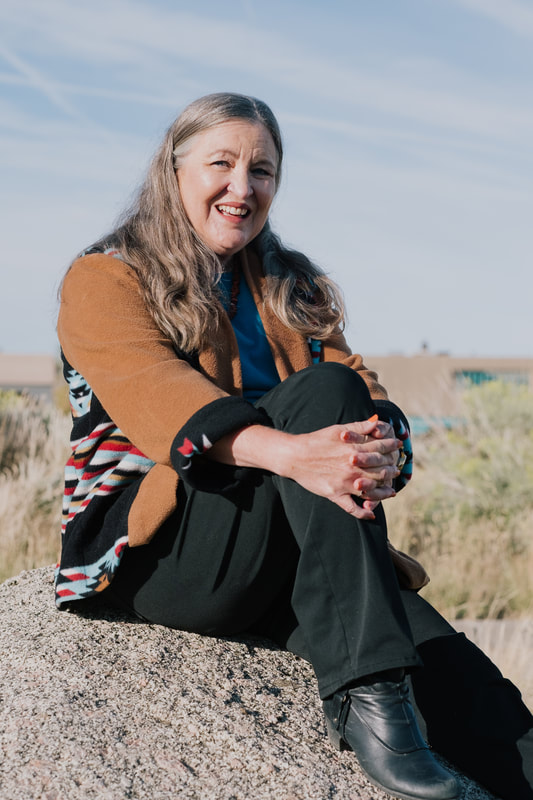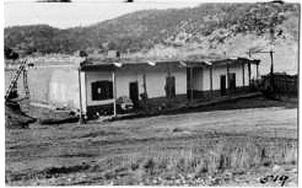 Johnson Ranch, 1917
Johnson Ranch, 1917 Like the other two ranches, the owner of Johnson’s Ranch, a Missouri native named Anthony D. Johnson, was known to be strong Union supporter. At the first appearance of the Southern Army, Johnson took his New Mexican-born wife, Cruz, and their five children, and fled into the hills, where they camped in the frigid weather until it was safe to return home.
It never occurred to the Confederates that the Union Army could attack their supply train, but that is exactly what Colonel John M. Chivington did. Guided by the legendary Manuel Antonio Chaves, a New Mexico Volunteer nicknamed El Leoncito due to his small stature and outsized courage, he led a flanking party over Glorieta Mesa, on the south side of the pass. Chivington's intention was to outflank the Confederate Army so that he could attack its rear while Colonel John Slough attacked from the front. However, he overshot his objective.When he looked down on the supply wagons, Chivington realized that he had a unique opportunity. Changing his plans, he had his men then climb down the steep bluff and capture the Confederate guard. They spiked the cannon and burned the Texan supply train. He also ordered that all the Confederate’s draft mules and horses be bayoneted.
For the Johnson family, the invasion proved an economic disaster. They returned to find that Confederate soldiers had looted the house and ranch. They had taken a barrel of whiskey, ten bags of flour, 20 bushels of corn, sugar, molasses, soap, his clothing, and even his canned oysters. They had burned his furniture and fences as firewood. His house and the stagecoach station had nothing left to them but their bare walls. Johnson filed a claim against the U.S. government for $4,075, but there is no record that his claim was ever paid. Luckily, he had the foresight to drive his cattle into the hills, so he had not lost everything.
Eventually, the Johnsons recovered and got back to the business of operating their stage stop and cantina on the old Santa Fe Trail. He acquired wagons and ran a freight service that hauled goods to and from Fort Union on the edge of the plains. In late 1869, he moved his family to Trinidad, Colorado, just north of Raton Pass. Soon, Johnson hauled ties for the advancing Atchison, Topeka and Santa Fe Railway. In early 1879, Johnson was attacked and killed by highwaymen at a river crossing just east of Springer. His body was never found, and although the culprits were captured and brought before a federal judge in Santa Fe, the trial record has been lost and it is unknown what happened to the highwaymen.
The historic Johnson’s Ranch building lasted nearly 90 years longer than its owner. The building which had been a stage station on the historic Santa Fe trail and sheltered a Confederate Army for a few days was bulldozed in 1967 to make room for Interstate 25, that connects Denver to El Paso.
| | Johnson's Ranch is one of the settings for Jennifer Bohnhoff's historical novel The Worst Enemy, which is book 3 in Rebels Along the Rio Grande, a trilogy of Civil War Novels published by Kinkajou Press, a division of Artemesia Publishing. The first is Where Duty Calls. |
